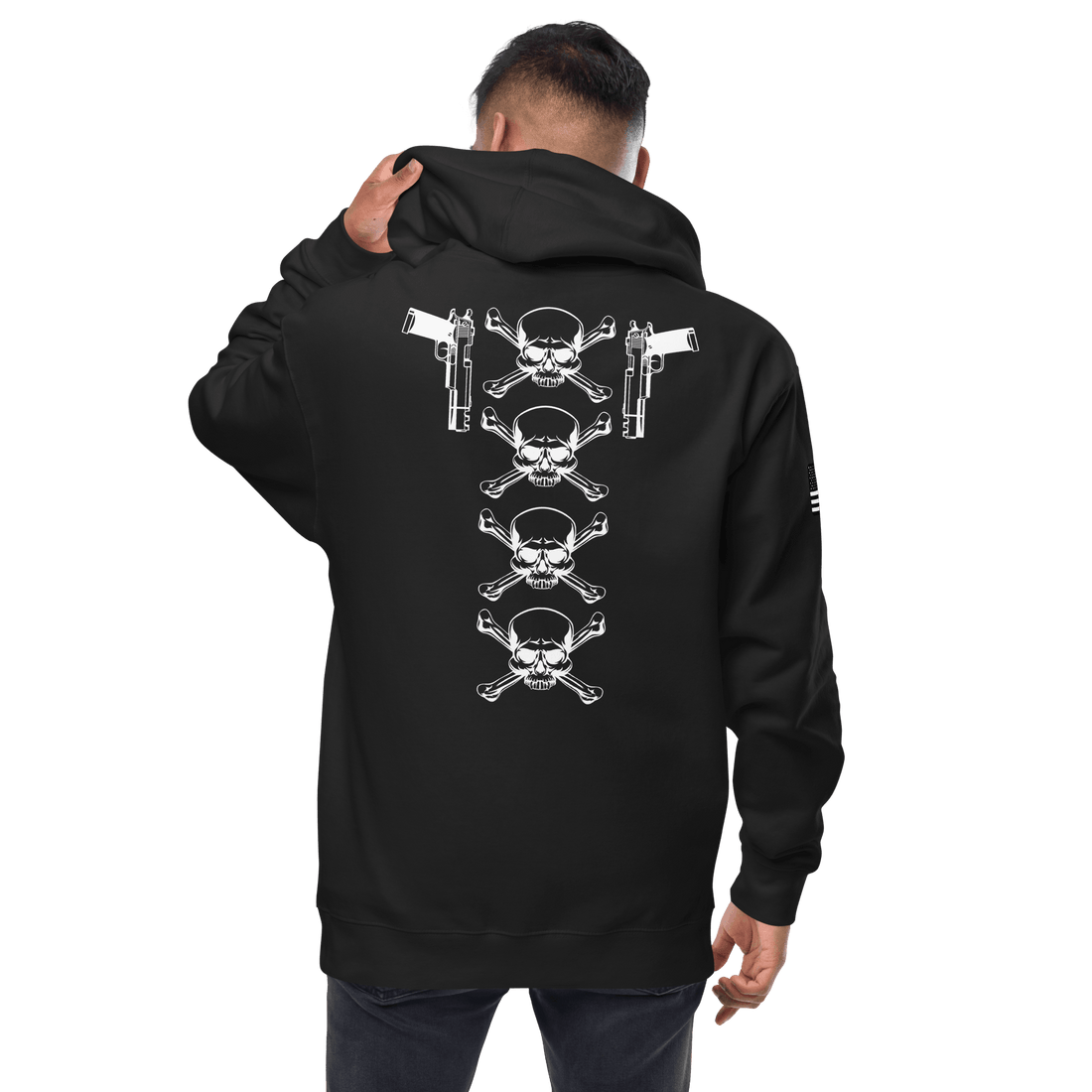
True Facts about Skull and Crossbones
Share
The skull and crossbones symbol is easy to recognize, typically being a white skull on a black background, although there are many variants. The origins of its use are something of a mystery but reach as far back as Ancient Egyptian times with the sarcophagus of Tutankhamun depicting the pharaoh with his arms crossed holding a flail and a crook.
The image as we know it gained more popularity in the Middle Ages when the Knights Templar began to use it on their naval vessels in honor of their Grand Master and in turn it was used by pirates on their Jolly Roger flags.
The symbol has denoted both life and death and was typically used on gravestones and in graveyards. Today it remains a symbol that denotes danger and poison.
Legends of the Knights Templar
The skull and crossbones origins lie with the Knights Templar, an ancient order of crusading knights, who have been credited with the introduction of the skull and crossbones symbol as we know it. According to legend, the symbol shows the bones of Jacques de Molay, the last Grand Master of the knights, who were burned alive by order of Pope Clement V in 1312.
The story tells that when his brothers went to find his remains all they could find was his skull and femurs. The knights owned the world’s biggest naval fleet in the 13th century. In Molay’s memory, they used the symbol on the flags of their ships.
Another legend of the skull and crossbones origin and its connection to the Knights Templar is the story of the Skull of Sidon. The true love of Lord Sidon, a knight himself, died when she was young. Overcome with grief, Lord Sidon dug up her body but a voice told him to return in nine months when he would have a son. When he returned a skull rested on the skeleton’s femurs.
The voice told him to take the skull and it would be the giver of good things. It had the power to defeat any enemies that came before it and so became used on a ship’s flag.
From pirates to the poison bottle
Sidon was actually a known pirate port where sailors landed to sell on their booty. Pirates originally used a red flag on the top of their ships’ mast to symbolize blood and to show that they gave no mercy. But it was not long before they began to use the symbol we recognize of a white skull and crossbones on a black flag.
The first recorded use of the skull and crossbones on a ship’s flags dates to the 17th century. Richard Hawkins, who was captured by pirates in 1724, saw a black flag that showed a skeleton stabbing a heart with a spear, that the sailors called Jolly Roger. It soon became the nickname for any pirate flag of which the skull and crossbones became more popular.
The flag was a warning to their enemies meaning death to all who saw it. Although the symbol remained the same, pirates designed differing flags so that their enemies would know who they were. The skull and crossbones motif was used with other images like goblets, knives, hearts, and swords.
As piracy declined, the skull and crossbones symbol was still used to denote danger but of another kind. In 1829, New York State Law required that anything containing poison should be labeled. The skull and crossbones first appeared on poison bottle labels in 1850 and even the bottles themselves could be made to resemble a skull. Today the image is still used to warn of danger.
Article Source: www.History101.com
https://www.dominozee.com/products/2-a-unisex-fleece-zip-up-hoodie?_pos=1&_sid=88ac3f78b&_ss=r
